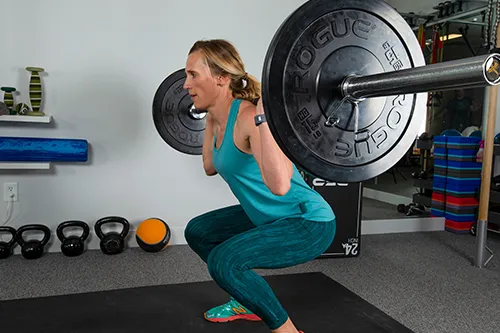In our Boulder Physical Therapy and Lafayette Physical Therapy clinics we utilize the latest research findings to help patients achieve their goals. Over the last few years we have successfully utilized the findings on utilization of weight training to improve bone density among at risk groups such as patients diagnosed with osteopenia, osteoporosis, as well as, peri and post menopausal females. Bone density was previously thought to slow down the loss of bone density with aging, but researchers recently have found bone density can improve with high intensity weight training. Below are 5 tips that we have found help individuals looking to achieve greater bone density scores with exercise.
- Learn The Correct Form For Each Exercise. Each participant in the studies were given time to become familiar with the core movements of the exercise program including squats, deadlifts, overhead presses and jumping. We strongly recommend each participant work with a Physical Therapist to learn the correct form and techniques without any weight. A PVC pipe or dowel rod works as a low weight substitute for the barbell.
- Use The Correct Repetition Ranges. Each exercise is designed to create a positive stress on the participant’s bone leading to higher density over time. In order to promote this cell turnover loads must be utilized consistent with a 5-8 repetition range. You should be able to do no more than 7 or 10 reps at a repetition range of 5 or 8, respectively. Many people make a common mistake by stopping at the end of the repetition range without asking themselves how many more repetitions they could have done with good form. Reps in Reserve
- Use The Correct Weight. Intensity or weight of the lift and repetition range are inversely related and essential for an optimal treatment. When you are lifting in a 5-8 repetition range you will be lifting between 95% and 80% of your 1 repetition max. It will feel heavy and should be challenging.
- Understand How To Progress The Program. Each session will need to be modified based on your recovery, ability to participate, and most importantly your strength gains. This takes time to learn and we recommend working with a Physical Therapist who can teach you how to progress and sometimes regress the workouts based on these variables. A Physical Therapist is also very helpful for accountability and completing each week’s workouts.
- Be Consistent. These workouts are challenging and were designed to be completed 30-40 minutes per session, twice a week, for 6-8 months. Expectations for changes in bone density should be a long term goal as you work the program over time. Bones lost their density over a long period of time and in turn it will take time to regain bone density with the strength training program. Stay with it!
Click Here to schedule your next appointment with the experts at MEND

